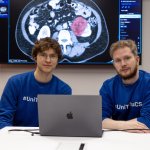
News • Clinically validated framework
AI helps detect kidney cancer faster
A novel machine-learning-based solution analyses CT images and helps radiologists detect both malignant and benign lesions in the kidney more quickly and reliably.

A novel machine-learning-based solution analyses CT images and helps radiologists detect both malignant and benign lesions in the kidney more quickly and reliably.
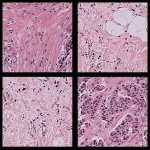
A sample of inequality: A new study shows that AI models can infer demographic information from pathology slides, leading to bias in cancer diagnosis among different populations.
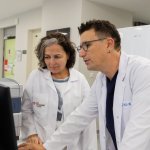
Now, a research team has developed a novel diagnostic approach that enables the rapid and simultaneous detection of both antibiotic resistance and high virulence in Klebsiella pneumoniae.

Introducing mobile iCTG dramatically improves the detection of fetal heart rate abnormalities and strengthens perinatal outcomes - even in resource-constrained environments, a new study shows.

Researchers have discovered that low physical activity is associated with a higher risk of lymphedema. They have also noted that a lymph scanner objectively measures changes in the condition.

At the JFR 2025 (Journées Françaises de Radiologie), the annual meeting of the French Society of Radiology, an organist and a neuroradiologist came together to share a story that bridges two worlds rarely seen in dialogue – that of sound and that of images. One listens, the other looks. Yet both try to understand the same mystery: what happens in the human brain when music takes control?
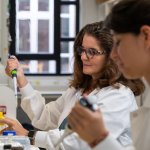
New research shows that a harmless strain of Klebsiella – discovered by chance in laboratory experiments – can eliminate infections and reduce gut inflammation in inflammatory bowel disease (IBD).

A simple blood test that can very accurately predict the chance of survival with good recovery could be of great significance for patients in intensive care after a cardiac arrest.
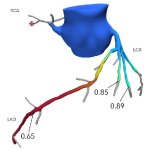
Can CT-derived fractional flow reserve (FFR-CT) be used in patients with angina to predict future major cardiovascular events? A novel AI-based approach for CCTA analysis yields promising results.

Even minor functional impairments of the kidneys can have serious consequences for patients after major surgery. New biomarkers could help identify high-risk patients at an early stage.

Breast cancer screening for women under 50 isn't cost-effective – yet 1 in 5 diagnoses occurs in this age group. A new study suggests a personalised approach that could change this equation.
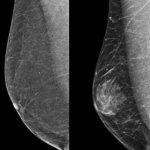
Breast imaging for male and transgender patients remains an under-researched field with significant gaps in guidelines and clinical practice. At the European Society of Breast Imaging (EUSOBI) annual scientific meeting – held in Aberdeen, Scotland, in cooperation with the British Society of Breast Radiology – experts presented findings from a pan-European survey on male breast imaging and…

After T-cell redirecting therapies, patients are typically hospitalized for several days to watch for side effects. New research shows that these patients can safely be monitored at home.

Two major Dutch hospitals, Catharina Ziekenhuis in Eindhoven and University Medical Center (UMC) Utrecht, are integrating artificial intelligence (AI) from Qure.ai into their chest X-ray workflows.

Facing a mental health crisis, more and more people turn to chatbots and AI characters. While they offer new possibilities, they also pose great risks, especially for vulnerable users, experts warn.

New immunotherapies are effective against skin cancer, but they can cause serious side effects. New insights suggest that a lower dosage may lead to better outcomes and longer survival.

People with diabetes face a higher risk of sudden cardiac death, a new study finds. Alarmingly, the increase in risk is especially noticeable among younger adults.

At the 2025 Journées Francophones de Radiologie (JFR), novelist, diplomat, and physician Jean-Christophe Rufin took the stage to remind an audience of radiologists that medicine, at its core, is a human story – one that needs to be told, felt, and shared. Beneath the cold light of MRI scanners and the hum of technology, he reintroduced something fragile yet essential: empathy.
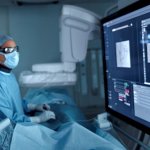
At the RSNA 2025 annual meeting, Royal Philips has announced the expanded commercial availability of their LumiGuide 3D Device Guidance system for light-based navigation.

IDH mutated gliomas are slow-growing brain tumors with a relatively good prognosis. A new study shows that many patients reveal measurable cognitive impairment in the first year after treatment.

Thousands of NHS knee replacement operations are cancelled at short notice every year, many for avoidable reasons, a new study shows. This costs the NHS millions of pounds and increases waiting times.

How can hospital design help adapt to pandemics and climate emergencies? To explore new solutions for smart and sustainable healthcare, experts from Taiwan and Sweden shared their experiences.
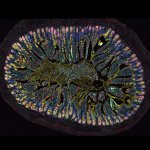
New insights into the intestinal nervous system – or "gut brain" – open new avenues for advancing therapies for allergies, chronic inflammatory bowel diseases and irritable bowel syndrome.

Microplastics pose a human health risk in more ways than one, a new study reveals: not only do the particles harbor pathogenic bacteria, they may also help the spread of antimicrobial resistance.

A European consortium has developed a new decision making framework for health professionals which they hope will transform the care of patients with chronic obstructive pulmonary disease (COPD).

Pseudomonas aeruginosa, a hospital-acquired bacterium that causes serious infections, can move from the lungs to the gut inside the same patient, raising the risk of sepsis, new research reveals.

A team of researchers comprehensively catalogued a new collection of bacteria-eating viruses called phages. These phages could be used to combat Klebsiella pneumoniae - a serious threat in hospitals.

Delivering a pathology service in resource-constrained locations and developing countries remains a challenge. Cost is a significant barrier, as is the availability of equipment, trained staff and technical and IT support can also hinder a desire from clinicians and pathologists to give their patients a high level of service to help their diagnosis and recovery. The subject was tackled in a…
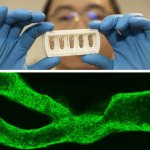
Researchers have developed a new 3D printing technique for blood vessels on glass. This could be a tool for studying stroke causes and testing patient-specific medications without animal testing.
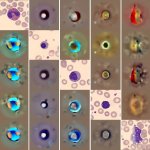
Researchers have created a system that uses generative AI to study the shape and structure of blood cells, and spot unusual or rare cells that may indicate disease such as leukaemia.
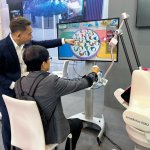
Rehabilitation specialist Fourier Rehab presented its portfolio of robotic systems at MEDICA. The solutions ranged from exoskeletons to cycling-based therapy devices and platforms for data management.

Current scores to assess the severity of illness in ICU patients often fail in international contexts. Researchers now call for a global scoring system based on universally available data.

A new solution enables doctors to show 3D images of a patient's anatomy during consultations. The technology is designed to help patients understand their conditions and make informed choices.

Artificial intelligence (AI) is transforming healthcare, but it also introduces new cybersecurity risks that challenge IT teams. While AI streamlines diagnosis and workflow, cybercriminals are leveraging the same technology to infiltrate hospital systems. Experts addressed these emerging threats and strategies for resilience during the ‘Maximising What You Have for Cyber Resilience – Ask the…

The NanoZoomer S540MD by Hamamatsu is engineered with the lab in mind for a seamless workflow. Featuring compatibility with staining racks, fast slide scanning, exceptional image quality, and an intuitive touchscreen interface, this high-capacity scanner is built to handle the needs of the clinical pathology laboratory.

AHC provides medical-grade wet wipes for hospitals, clinics, care homes, laboratories and home healthcare. As a trusted OEM and private label wet wipes manufacturer, we support brands worldwide with customized formulations for infection control, patient hygiene and sensitive skin. Production takes place in certified class 100K cleanrooms using medical-quality nonwovens and purified EDI water.…

Having multiple sleep disorders, such as OSA and insomnia, has been identified as a strong risk factor for uncontrolled hypertension. This could help identify patients in need of closer monitoring.

Today, language barriers in healthcare can be easily overcome – leading to improved patient care. Pocketalk, the global leader in translation hardware, software, and integration, delivers accurate, mobile, and secure translations that exceed industry security standards.

A new study shows how AI could transform medical education, while calling for stronger collaboration across schools, hospitals, and regulators to make it safe, responsible, and effective.

New research reveals why women with long Covid — especially those who develop chronic fatigue syndrome — tend to experience more severe and persistent symptoms than men do.
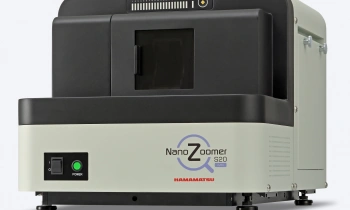
NanoZoomer® S20MD Slide scanner system C16300-21MDEUThe system allows to make whole slide imaging for in vitro diagnostic use. This compact scanner fits on a lab bench and is a scalable solution. The NanoZoomer S20MD for EU is the IVDR, UK MDR2002 and IvDO compliant model ideal for use in hospitals and clinical laboratories.Scan speed: (20×/40× mode) approx. 30 s (scan…
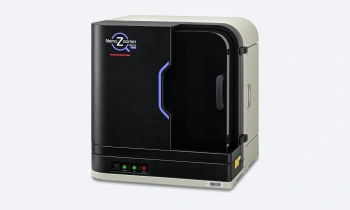
NanoZoomer® S60v2MD Slide scanner system C16600-21MDEU The system allows to make whole slide imaging for in vitro diagnostic use. It can scan both standard and mega-sized slides in one batch.The NanoZoomer S60v2MD for EU is an IVDR, UK MDR2002 and IvDO compliant model ideal for use in hospitals and clinical laboratories.Scan speed: 20× mode approx. 60s/40x mode approx. 75s…
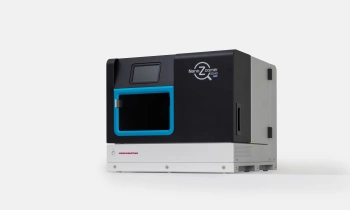
NanoZoomer® S540MD Slide scanner system C17400-21MDEUThe NanoZoomer S540MD by Hamamatsu is engineered with the lab in mind for a seamless workflow. Featuring compatibility with staining racks, fast slide scanning, exceptional image quality, and an intuitive touchscreen interface, this high-capacity scanner is built to handle the needs of the clinical pathology laboratory.The NanoZoomer…

In a CT scan of the lungs, accidentally inhaled objects can be extremely subtle and easy to miss, even for experienced clinicians. A new AI model acts as a “second set of eyes” to help detect hidden cases.

Europe’s healthcare systems face growing pressure: fewer staff, higher infection-control demands, and increased documentation. Estonia is already built for this. With 99% of health data digital, digital trust is built into everyday healthcare – giving Estonian companies a strong foundation for efficient collaboration, fast traceability, and AI-supported operations.
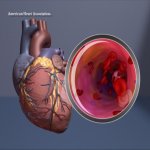
A patient reports with chest pain, but in the coronary angiogram, the main heart arteries look clear, so it cannot be angina – right? A new study reveals that this approach can easily lead to misdiagnosis.
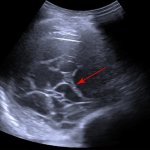
Has organ imaging using ultrasound arrived at the same level as cross-sectional imaging? At the annual conference of the German Society for Internal Medicine (DGIM), PD Dr Corinna Trenker presented new technological developments and their diagnostic significance. Despite numerous innovations such as multiparametric protocols and AI support, she made it clear that the human factor remains one of…

Just like the “ABCDE” mnemonic for melanoma awareness, researchers hope their diagnostic tool will transform how doctors approach persistent rashes, reminding them to consider lymphoma sooner.

Type 1 diabetes is demanding for patients. A new study shows the benefits of a systematic, intensive treatment with remote monitoring of glucose levels and weekly healthcare contact.

In the future, health monitors and medical devices could be powered by the body’s natural sugars: A new research project aims to harness power from glucose for implantable medical devices.

Postoperative femoral fracture—a break in the thigh bone near the hip joint—is a common complication after total hip replacement. A new study explores how implant design can reduce this risk.

About 60% women in Europe enrolled in a national breast cancer screening programme who have a screening mammogram can feel reasonably confident that radiologists will be able to diagnose early-stage breast cancer. But what about the 30% categorised as having dense breasts, and the 10% who have extremely dense breasts? At the 2025 SBI (Society of Breast Imaging) Breast Imaging Symposium held in…

Pacemakers have a range of different functions, not all of which are needed for every patient – switching off unnecessary features could help extend the battery life of the devices by several years.

In emergency settings, AI to analyze ECG data can improve detection of severe heart attacks, including those with unconventional symptoms, or atypical ECG patterns, and reduced false positives.
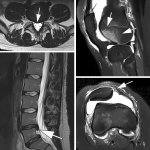
At the 2025 ESMRMB Annual Meeting in Marseille, speakers made a strong case for what remains an outsider in radiology: low-field MRI. Despite its affordability, improved performance, and reduced environmental footprint, the technology continues to face scepticism – not from regulators or patients, but from radiologists themselves.

With Taipei City Government's support, six Taipei companies will showcase innovative biotech and medical device solutions at MEDICA 2025 (Nov 17–20, Düsseldorf), advancing healthcare with speed and precision.

Developmental dysplasia of the hip occurs in 2-4% of infants, but screening via ultrasound is notoriously hard to master. An AI-assisted application could prevent many unnecessary hospital referrals.

Biomarker testing is ushering in a novel era of therapy personalisation for gastroesophageal and colorectal cancers, according to experts presenting at the 37th European Congress of Pathology in Vienna this September. During a session on state-of-the-art in gastrointestinal biomarkers, speakers outlined how targeted therapies and immunotherapies are transforming treatment options – but…

At the 38th European Association of Nuclear Medicine (EANM) Congress, held from October 4–8 in Barcelona, United Imaging, a global manufacturer of cutting-edge medical imaging technology, showcases its most advanced AI-powered molecular imaging innovations, the uMI Panvivo family and the uMI Panorama family, and highlights the company’s strong growth and confidence in the European market.

A novel subretinal implant could help patients with age-related macular degeneration (AMD) partially restore eyesight, a new study shows. Participants recovered their ability to read letters, numbers and words.

An international team has developed an AI model that brings together medical imaging data and clinical information to calculate the risk of breast cancer tumour recurrence more accurately.

Magnetic resonance imaging (MRI) holds great potential to spare men with suspected prostate cancer a painful biopsy. In our interview, Dr. Peter Seidensticker, Head of Medical Affairs Radiology at Bayer, outlines how MRI could be implemented as a first-line diagnostic.
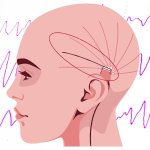
Traditional diagnostic methods for epilepsy face significant limitations. A new clinical trial explores the potential of advanced brain monitoring to improve diagnosis and management of the condition.

In the NICU, a few hours can mean the difference between unnecessary procedures and targeted, life-saving treatment. A new speed record for WGS opens new diagnostic possibilities.

Entering menopause at an earlier age is associated with an increased risk of dementia, a new study finds. The research also suggests a way for women to combat the cognitive decline.
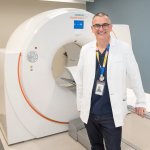
A novel imaging solution, called PSMA PET scanning, can more effectively detect the recurrence of prostate cancer compared to standard methods, and is associated with improved survival outcomes.
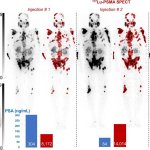
A new type of SPECT imaging provides strong prognostic information to guide prostate cancer treatments according to tumor evolution, significantly impacting patients' overall survival.

An expert summit for craniomaxillofacial (CMF) care brought together leading surgeons to explore how digital technologies are reshaping surgical planning, precision, and patient outcomes.
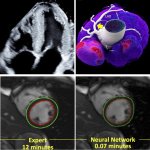
Cardiac imaging is evolving, and new techniques continue to uncover the secrets of the heart for cardiologists who know how to use them. At the ESC 2025 Congress in Madrid, four experts explored cutting-edge developments across different modalities. Ranging from AI-assisted ultrasound image acquisition and accelerated MRI protocols to advanced prognostic tools for CT and nuclear imaging, these…

Chronic fatigue (ME/CFS) affects millions worldwide, but is poorly understood and has long lacked reliable diagnostic tools. Now, a new blood test claims to diagnose the condition with 96% accuracy.

Breast cancer claims around 670.000 lives each year. Now, researchers propose that whole genome sequencing (WGS) could help many patients find better treatments or match them with clinical trials.

Precision Oncology Ireland (POI), a €28M cancer research programme uniting universities, charities and industry to develop tailored diagnostic and therapeutic solutions, has now entered phase 2.

The heterogeneity of critical illnesses like sepsis, ARDS, and trauma creates immense challenges. A new, unified way to classify patients aims to improve treatment.

Stroke patients in four NHS hospitals are now receiving genetic tests that determine whether a commonly prescribed drug will work for them – a breakthrough that could transform treatment for millions. Digital approaches are spearheading a drive to help make genomic medicine part of everyday care. The role of digital tools was a central theme at the HETT (Healthcare Excellence Through…

Dizziness upon standing up or during exertion: Postural orthostatic tachycardia syndrome (POTS) affects almost a third of patients with severe long Covid, a new study finds.

Immunotherapy has improved the treatment for many cancers, but progress has been limited in leukemia. Discovery of a new evasive mechanism could help change that.

Using PET/CT imaging, researchers discovered that the biological activity of visceral fat may drive the progression of endometrial cancer, offering a novel angle for diagnosis and treatment.

Breast cancer survivors are often discouraged from undergoing hormone replacement therapy (HRT) to alleviate menopause symptoms. Now, new research paints a more differentiated picture.

Overcrowded EDs and the escalating workload of nurses are pressing challenges in emergency medicine. While AI might not solve these problems, it could help staff mitigate them, new research suggests.

Healthcare stands at a crossroads. With an impending shortage of 11 million healthcare workers by 2030 and millions dying annually from poor-quality care, the industry desperately needs transformation. Dr. Alex Ng from Tencent Healthcare explores how artificial intelligence is emerging as a powerful catalyst—not to replace human expertise, but to amplify it.

This year, the Journées Francophones de Radiologie (JFR) will carry a clinical ambition as simple as it is essential: to shine a spotlight on those who are often overlooked. Under the presidency of Professor Mathieu Lederlin, thoracic radiologist at Rennes University Hospital, vulnerable patients will be at the heart of the annual meeting of the French Society of Radiology that will unfold…

Children with asthma using at-home monitoring are around half as likely to visit the ED or be hospitalised, compared to those only receiving care from their medical team, new research shows.

Hospitalists frequently discuss the risks associated with tests, treatments, and/or surgical procedures with their patients. But is everyone in the clear on what a “slight risk of complications” actually means? A session on the meaning of risk to patients and how to effectively communicate risk was discussed at SHM Converge 2025, the annual meeting of the Society of Hospitalist Medicine held…

Scientists created precise replicas of Candida sugar coats to understand immune responses, enabling fast bedside testing that could replace slow lab cultures.

Using AI to help detect one of the leading killers of women worldwide: A new machine learning model can successfully predict heart disease risk in women by analysing mammograms.
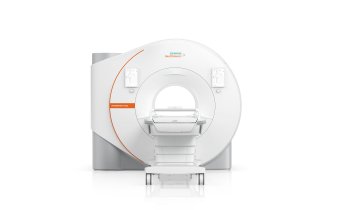
HighlightsOur easiest to site helium-independent2 1.5T MRI with 70 cm Open Bore and ultra-compact design30-45% energy savings annually with the help of e.g., Eco Power Mode Pro3Streamlined workflows with myExam Companion and our unique BioMatrix Contour coilsIncreased patient experience with our wireless audio system ComfortSoundHighest-quality imaging for every clinical discipline with…

The number of patients with substance abuse disorders who are admitted to hospitals as inpatients has been steadily increasing. Hospitalists attending SHM Converge 2025, the annual meeting of the Society of Hospital Medicine (SHM) in Las Vegas this spring, were given practical advice on how to treat these patients.

German researchers discover how HIV selects genome integration targets using RNA:DNA hybrids as guides, revealing new therapeutic approaches for controlling viral reservoirs.
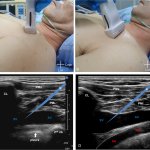
Performed inaccurately, cannulation of major veins is associated with complications like pneumothorax or artery puncture. Chinese researchers propose a new ultrasound-guided method for more accuracy.

Digital transformation, including AI, is key to improving healthcare services - but this may be easier said than done: A new UK study identifies hurdles for AI implementation in NHS hospitals.
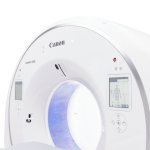
Canon announces the launch of the Aquilion One / Insight Edition 160, a new addition to its computed tomography (CT) portfolio. The new system made its debut at Röntgenveckan (Stockholm, Sweden).
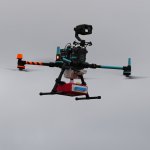
A new study demonstrates drones can deliver life-saving AEDs in just minutes from an emergency call – potentially doubling survival rates in out-of-hospital cardiac arrests.
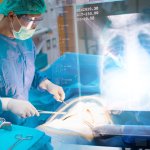
In metastatic EGFR-mutated non-small cell lung cancer (NSCLC), targeting residual disease through surgery can extend the benefits of EGFR TKI therapy beyond standard monotherapy, a new study finds.

Wrong equipment, inadequate posture, unusual behavior: Only 1 in 7 online stock photo images of blood pressure monitoring correctly show how blood pressure should be measured, a new study finds.

Use of an AI voice agent to prompt self-reported blood pressure readings may help improve accuracy of at-home blood pressure measures and patient outcomes in older patients with hypertension.

Systematic screening and support for mental health conditions such as depression, anxiety, or PTSD should become normalised in cardiovascular care, cardiologists urge in a new Consensus Statement.

Traditionally, measuring heart rate requires some sort of wearable device. Now, new research shows how the signal from a household WiFi device can be used for this crucial health monitoring.

AI may be effective at detecting advanced breast cancer in mammograms, but current models still lack reliability. New research from Korea suggests that up to 14% of invasive cases are missed.

Hospitalists face a dual challenge when a critically ill pregnant patient is admitted to a hospital: providing safe and effective treatment for both mother and fetus. Pregnancy causes physiologic changes as well as anatomical ones, which complicates the assessment and medical management of pregnant women. At the annual meeting of the Society of Hospital Medicine (SHM) in Las Vegas, an expert…
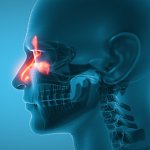
Surgery or antibiotics? For the first time, a major clinical trial compared treatment options for chronic rhinosinusitis (CRS), or sinusitis – clearly favoring the surgical approach.

The European Society of Cardiology (ESC) has awarded Roxana Mehran, MD, from Mount Sinai, with its top honor, the “ESC Gold Medal”, during a special ceremony at the ESC Congress in Madrid.

Researchers have developed a machine learning algorithm that uses cardiac MRI images to help identify breast cancer patients who may be at risk of cardiotoxicity during cancer treatment. The research, led by cardiologist Dr Paaladinesh Thavendiranathan from Toronto General Hospital University Health Network, was presented at the European Society of Cardiology's Cardio-Oncology Conference in…

A newly developed method to accurately quantify how much radiation is absorbed by the blood during cancer treatment could lead to more personalised, preventive, and safer radiotherapy.

Scientists developed an AI-based approach to diagnose colorectal cancer from different microbial subgroups in the gut microbiota – a non-invasive and low-cost alternative to colonoscopy screening.

Shortages of skilled staff is creating challenges in medical laboratories across Europe. Many workers are nearing retirement age with numerous hospital laboratories having unfilled positions and facing the further issue of sharp competition from the pharmaceutical industry for skilled personnel. The challenges, and potential solutions, for medical laboratories were aired at a session looking…
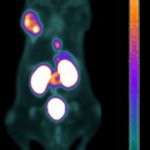
Tracer molecules serve to provide visual guidance in nuclear medicine, but a new molecule could give surgeons additional audio cues to help them locate prostate cancer tumors and metastases.

AI-driven scribes that record patient visits and draft clinical notes for physician review may lead to significant reductions in physician burnout and improvements in well-being, a new study finds.

Researchers report they have built a new non-toxic and non-radioactive handheld device that uses the unique properties of diamonds to diagnose metastasized breast cancer.

Digital technology is being harnessed to support the women’s health agenda in the UK and address issues of equity and access to healthcare through a range of innovative initiatives. Delegates to the HETT (Healthcare Excellence Through Technology) North conference in Manchester heard how digital technology is being leveraged to support women’s health Hubs – which tailor care to meet…
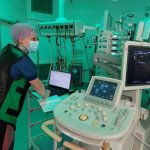
Using ultrasound imaging, researchers measure the wall thickness of the aorta from within a patient's body, to predict with higher accuracy whether an aneurysm will rupture or not.
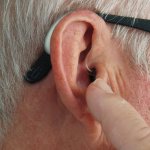
To help people with hearing loss, researchers develop an AI-powered lip-reading camera that translates lip movements into sound. The device could also work in areas with a lot of background noise.

Lower income, higher BMI, less time and fewer resources to improve their health: A new study links social and environmental factors in patients from deprived areas to poorer outcomes in surgery.
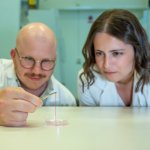
A novel approach to bioprinting may lead to new ways to treat skin burns and severe wounds. With this, the researchers aim to create new skin that does not become scar tissue but a functioning dermis.
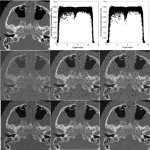
Medical imaging methods are often affected by background noise, which can obscure fine anatomical details. A new approach to solve this problem draws inspiration from quantum mechanics.

Remote monitoring via microfluidic platforms, AI-assisted sensor systems, and more: Attendees of the Labmed Forum at Medica saw impressive examples on how wearable technology is becoming a transformative force in laboratory medicine to improve real-time monitoring of patients, covering widespread conditions such as diabetes, asthma and COPD. With an emphasis on remote monitoring, devices are…
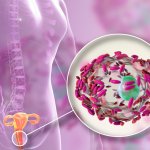
The vaginal microbiome is a largely overlooked area of medicine that could dramatically improve outcomes for common infections, infertility and even cancer for millions of women, a new review finds.

‘Intelligent bedside terminals’ installed at the upcoming NHS National Rehabilitation Centre in Loughborough are designed to help patients engage in their ongoing rehabilitation.

A multicenter study involving leading hospitals across Spain, has confirmed that people with COPD show altered levels of specific metabolites in their blood.
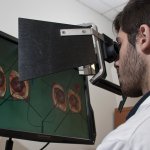
New research finds that neurosurgery students receiving AI-augmented, personalized feedback from a human instructor have better surgical performance, risk management and skill transfer.
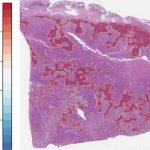
Microsatellite instability-high (MSI-H) tumors are associated with better clinical outcomes. A novel AI model for accurate MSI prediction could help battle gastric and colorectal cancers.
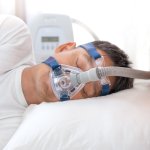
A treatment commonly used for obstructive sleep apnoea (OSA), lowers the risk of serious cardiovascular events in some patients but not others, according to new research.

An association between specific electrical patterns and structural characteristics of heart scars after a heart attack could offer a new approach for more targeted and effective arrhythmia treatments.

Classifying prostate cancer as “low-grade” could create a false sense of security and delay definitive treatments. A new study shows that the biopsy grade alone can paint an incomplete picture.

Chronic cough affects approximately 1 in 10 adults in the UK, but the causes are often unknown and treatment options limited. Now, a new study has identified neurological mechanisms as key drivers.
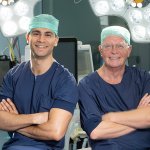
A new method to monitor blood flow in the brain helps neurosurgeons detect the risk of a stroke during surgery – and potentially prevent it. This could also be useful for other types of operations.
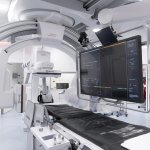
Sony and Siemens Healthineers announce a strategic global collaboration that combines the Artis angiography system of Siemens Healthineers with Sony’s Nucleus audio-visual management platform.

A new ventilation mode called proportional assist ventilation (PAV+) could improve outcomes for patients in the intensive care unit (ICU) who require help breathing, a new study finds.

A new, bacteria-based contrast agent illuminates tumors like a neon sign during surgery, enabling more precise resection and reducing the risk of recurrence.
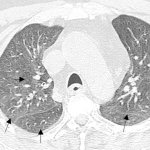
CT imaging is important to detect residual lung abnormalities after a Covid-19 infection. To avoid confusion with interstitial lung diseases, experts from 14 countries published a best-practice guide.

Hand hygiene is among the most effective ways of infection control. Yet, a new study finds that a worrying number of people do not wash their hands after using a hospital toilet.

A new AI tool has been shown to accurately predict who would go on to develop leaks in the heart valves – conditions known as regurgitant valvular heart diseases, at a very early stage from an ECG.

Manual calibration and parameter input in systems are time-intensive and error-prone, posing significant challenges across life sciences and hospitals. With a new generation of sensors, The Dickson Company aims to deliver a smarter, easier to use, and more autonomous monitoring solution.

From identifying under-utilized rooms to tracking spare mobile equipment like wheelchairs, spatial awareness technology is evolving to improve day-to-day operations on healthcare sites. The technology, which is already being deployed in airports, universities and industrial premises, is now seeing growing applications within hospitals. At the HETT (Healthcare Excellence Through Technology) North…

At Medical Taiwan 2025, manufacturers attracted attendees with a wide range of innovations. We took a closer look at some of the most exciting companies and their products on display at the medical, health and care expo.

Women with type 2 diabetes are nearly twice as likely as men to have hidden heart damage, according to a major new study. This could lead to sex-specific risk assessment and treatments.

Medical Taiwan has long been a showcase for cutting-edge healthcare solutions, but this year marked a pivotal moment. Visitors of the latest edition of the medical, health and care expo in Taipei witnessed a particularly noticeable step forward: the definitive transition of medical AI from promising research to actual clinical practice. Organized by the Taiwan External Trade Development Council…

A new study shows that retrieval-augmented generation (RAG) can eliminate hallucinations in clinical large language models (LLMs) while protecting patient privacy during contrast media consultations.

Building resilience for digitally driven healthcare: At the HETT (Healthcare Excellence Through Technology) North conference in Manchester, leading IT specialists highlighted the need for high levels of education, awareness and vigilance among healthcare staff in the fight to protect systems against cyberattack.

Starting fecal immunochemical testing (FIT) early significantly reduces both the incidence and mortality of colorectal cancer. These results of a new study support earlier screening.

Too many medicines, too many hospital visits: Inappropriate polypharmacy is a major driver of emergency hospital admissions among adults aged 65 and over, according to a new study.
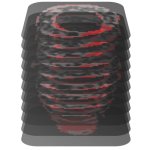
Analyzing heart imaging and a full spectrum of medical records, a new AI tool can reveal previously hidden information about a patient’s heart health, including predictions of sudden cardiac arrest.
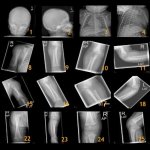
Covid-19 has intensified domestic violence rates worldwide, with children among the most vulnerable victims. At the ECR 2025 radiology congress in Vienna, Dr Rick R. Van Rijn presented compelling insights into how radiologists can identify non-accidental trauma (NAT) in children through systematic imaging approaches. From comprehensive skeletal surveys to specific neurological imaging protocols,…
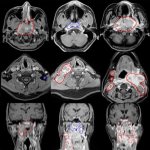
Molecular profiling of over 1,000 nasopharyngeal cancer (NPC) tumours reveals distinct differences in tumour microenvironment of locoregionally advanced NPC, supporting personalised treatment.

Should tracheobronchial anastomoses be routinely wrapped following resection and reconstruction? A new study revisits this unresolved question in airway surgery.

Heather Jacene, MD, assistant chief of Nuclear Medicine and Molecular Imaging at Brigham and Women’s Hospital, clinical director of Nuclear Medicine at Dana-Farber Cancer Institute, and associate professor of Radiology at Harvard Medical School in Boston, Massachusetts, has been named president-elect of the Society of Nuclear Medicine and Molecular Imaging (SNMMI).
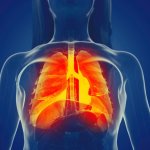
Pulmonary embolism (PE) remains one of the leading causes of maternal mortality. At the French Thoracic Society Spring Days in May, Dr Aurélie Dehaene, radiologist at European Hospital in Marseille, France, reviewed diagnostic strategies for suspected PE during pregnancy, with a focus on clinical algorithms and optimized imaging protocols.

New research makes a strong case for a new dual-targeting radiopharmaceutical, designed to attach to two vulnerable sites on cancer cells, enabling more precise and potent therapy.
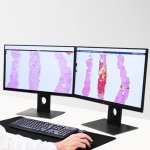
Digital pathology software company Fujifilm Healthcare Europe and Ibex Medical Analytics, specializing in AI-powered cancer diagnostics, announce a formal partnership to support efficient and accurate cancer diagnosis.
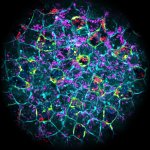
New research shows how embryos can protect themselves from bacterial infections even before forming their immune system. The findings could provide new insights into the origin of immunity.

Newly developed technology can detect breast cancer relapses up to five years in advance. This advance could represent a turning point in post-treatment follow-up, the researchers hope.

Machine learning (ML) for personalised care, large language models for empathy training of cardiologists, wearable sensor data for better screening, and more: Digital technologies hold great potential to improve diagnosis and treatment of patients with atrial fibrillation (AF). At the ESC 2024 cardiology congress in London, four experts explored the benefits of new solutions and pointed out…

COVID-19 vaccination reduces risk of dialysis and death in patients hospitalized with COVID-related acute kidney injury (AKI), new UCLA research shows. Vaccinated patients were less likely to require ongoing dialysis and more likely to survive after discharge than unvaccinated patients.

The use of surgical robots offers a wide range of possibilities, but in Europe the technology is often unable to reach its full potential. Dr. med. Christoph Wandhöfer explains why.

If data used to train AI models for medical applications differs from the real-world data, it could lead to patient harm. A new study found proactive strategies to mitigate such data shifts.
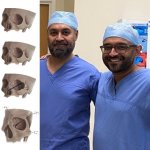
Using a keyhole surgery approach, surgeons have found a new way to access previously difficult-to-reach brain regions with faster recovery times. With the help of 3D modelling technology, the neurosurgeons succeeded in removing complex tumours from the cavernous sinus through the eye socket, avoiding complex brain surgery and enabling their patients to make a quicker recovery.
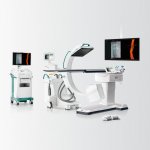
Ground-breaking innovation for endovascular surgery: The new software package Endovascular Navigation supports physicians in their interventions with planning, navigation and fusion imaging.

A new ‘liquid biopsy’ test can help fast-track lung cancer patients to receive targeted therapy up to two weeks earlier, while helping avoid further tests and treatments including chemotherapy.

Using nine different molecular biological technologies, researchers were able to precisely measure the properties of a melanoma tumor in four weeks and enable a precise treatment decision.

Lung cancer is the leading cause of cancer death in the EU, yet no organized screening program exists to detect the disease before symptoms appear. This September, France will strike back with an ambitious pilot program that could boost European lung cancer screening. Professor Marie-Pierre Revel presented the details at the French Thoracic Imaging Society Spring Days in Marseille, highlighting…

Many women are only diagnosed with breast cancer after they present to a doctor with symptoms. A new study points out that early detection through screening leads to improved outcomes.

In a world first, researchers have identified a set of biomarkers that could someday make it easy to spot Parkinson's disease in a patient’s blood sample.

What if every radiographer could help combat climate change while performing their daily work? Following the congress theme of ECR 2025, experts revealed how small changes – from education initiatives to simple workflow adjustments – can collectively transform the environmental impact of radiology.

A major challenge in cancer genomics is separating meaningful mutations from false positives. A new tool uses machine learning to significantly reduce these errors.

Childhood cancer diagnosis times span from immediate to delays of several years, according to a new study. Young bone tumor patients are among the most affected by these delays.

Newborns, especially those born prematurely, are vulnerable to conditions such as sepsis. A new device profiles an infant’s immune function from a single drop of blood to improve neonatal care.

A new method for predicting the risks of severe injuries during childbirth could improve care and reduce long-term complications for women.

Nuclear medicine specialist Daniela Oprea-Lager has been appointed Professor of Theranostics at Radboudumc / Radboud University. Her research focuses on the combination of diagnostics and treatment using radioactive substances, with particular interest for urological tumors, especially prostate cancer.
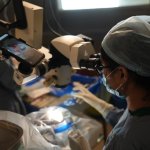
Cataracts are often treated via SICS surgery in low- and middle-income countries, which often leads to poorer results due to limited resources and training. A new AI-based tool aims to improve this.
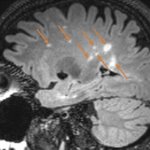
Experts from the University of Nottingham have proven that multiple sclerosis can successfully be diagnosed using an MRI scan, meaning patients no longer need to undergo a painful lumbar puncture.
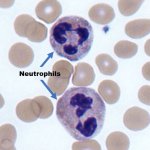
A US research team has shown that Sars-CoV-2 can “reprogram” pathogen-fighting white blood cells into immune system suppressing cells — a potential mechanism by which severe Covid may arise.

Survival rates for pancreatic cancer rise drastically the earlier it is detected, but early-stage tumors are notoriously difficult to spot. A new AI-powered diagnostic system is set to improve this.

From personalized medical guides and implants to advanced surgical planning solutions: 3D printing and visualization has seen considerable growth over the past years and is already making a significant impact in healthcare. AI, cloud, and virtual/augmented reality technologies show promise to further advance the number of applications.

A deep learning model was able to predict future lung cancer risk from a single low-dose chest CT (LDCT) scan, according to new research published at the ATS 2025 International Conference.
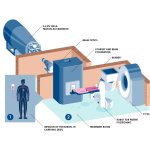
With the introduction of boron neutron capture therapy (BNCT), Helsinki University Hospital offers a new radiation therapy method that can destroy cancer cells while sparing the surrounding tissue.

As Emergency Departments (EDs) get ever busier, focus has fallen on the role artificial Intelligence (AI) can play in supporting patients and clinicians in delivering urgent care. The topic took centre stage in a session looking at the ethics of AI in the ED at the annual congress of the European Society of Emergency Medicine (EUSEM) in Copenhagen.

Jakob Kirkegård is a physician, associate professor, and now also a doctor at Aarhus University's Department of Clinical Medicine and Aarhus University Hospital. He has just obtained his doctoral degree in the surgical treatment of pancreatic cancer – one of the most deadly forms of cancer.

AI has the power to transform healthcare, but trust gaps among clinicians and patients threaten to slow adoption and impact, the 10th annual Future Health Index (FHI) report reveals.

Researchers have found a way to observe clotting activity in blood as it happens — without needing invasive procedures. This could open the door to better treatment of coronary artery disease (CAD).

Integration of large language models (LLMs) in healthcare is still in its early stages, but expected to expand rapidly. Now, researchers point out potential cybersecurity vulnerabilities in radiology.
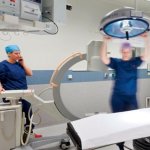
A new AI tool called PERISCOPE should help healthcare providers determine which patients need extra monitoring to protect them from wound or lung infections, UTIs or sepsis.

A new 4D flow MRI method could accelerate diagnosis of aortic stenosis, a progressive and potentially fatal heart condition.
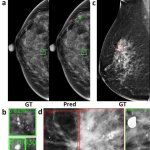
A novel deep-learning approach automatically finds and classifies microcalcifications found in mammography images—bringing both accuracy and consistency to breast-cancer screening.
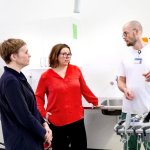
Using AI to analyse ultrasound scans can detect up to 35% more risk pregnancies than scans performed by healthcare professionals without AI decision support, according to new results.
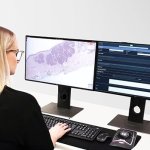
North Bristol NHS Trust and Fujifilm Healthcare Europe continue their long-standing relationship, with the establishment of a reference site agreement for the company's new pathology solution.

In the years following Brexit, many EU nurses have left the UK, and the quality of care suffered for it. Now, a new study puts a number of additional patient deaths as a result of the referendum.

From organ-preserving treatments to chemo-immunotherapy combinations: five studies presented at ESTRO 2025 showcase how radiotherapy is reshaping the treatment landscape for anal and rectal cancer.

Finding ways to target antibiotic-resistant bacteria is a scientific and medical priority. A consortium of researchers identified a compound capable of blocking a key protein for virulence, thus “disarming” the pathogenic bacteria.

Using AI and extensive analyses of gene activity in tumours, researchers have found new, precise biomarkers to diagnose prostate cancer at an early stage through a simple urine sample.
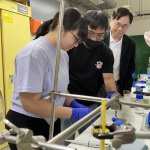
A new approach enables the detection of even trace amounts of cancer cells. The method leverages SERS for signal amplification, eliminating the need for fluorescent dyes.
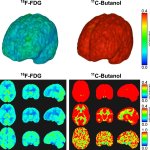
Using an advanced PET scanner, US radiologists explore how cancer, neurodegenerative diseases and other systemic conditions, can affect the brain by assessing the impact on the blood-brain barrier.
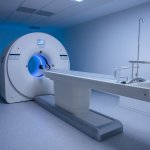
United imaging announces the successful installation of their digital PET/CT system uMI 550 at Centre Mèdic Alomar in Barcelona. Equipped with comprehensive cardiac imaging features, its use extends beyond cardiology.

HighlightsPre-hospital head CT scanning of patients with suspected stroke, enabling early treatment and appropriate triagingFix-mounted CT system in ambulance vehiclesTelescopic gantry with integrated accessories, e.g. shoulder board and head holder, for stroke patient head CT scanningConsistent and reliable Somatom image quality, with Stellar detector, advanced iterative reconstruction (ADMIRE)…

Radiation therapy is an effective component of many cancer treatments, but some patients experience severe side effects. A new study shows that hyperbaric oxygen therapy can provide long-term relief.

Dr Ari Melnick has been appointed the new Director of the Josep Carreras Leukaemia Research Institute by the Board of Trustees. The institute specialises in biomedical research and precision medicine in the field of leukaemia and other hematologic malignancies.
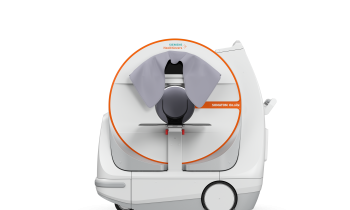
HighlightsReduce patient transports from the ICU to the radiology department by bringing the scanner to the patientEasy to maneuver within the hospitalTelescopic gantry with integrated accessories, e.g. shoulder board and head holder, for convenient patient positioningConsistent and reliable Somatom image quality at point-of-care, with Stellar detector, advanced iterative reconstruction, and…

Working conditions for scientists in the field of medicine are becoming increasingly difficult in the USA. A new funding initiative offers outstanding scientists a new perspective in Germany.

Pancreatic cancer is one of the most aggressive cancers, partly due to its tumor microenvironment, known as the stroma. Now, a study has identified a new key factor contributing to this feature.

Arginine vasopressin deficiency (AVP-D) is a rare condition affecting the body's water management. However, it is also known under a different name – this can lead to fatal mix-ups.
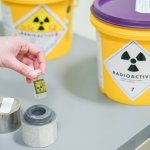
Nuclear medicine (NM), one of the more mature technologies of diagnostic imaging, has been experiencing a rebirth in innovation and interest. The increasing prevalence of cancer,, an aging global population, and greater longevity, has created a robust demand for nuclear medicine. At ECR in Vienna, presenters explored market perspectives, but also safety and sustainability challenges.

Researchers developed biomimetic materials inspired by lymph nodes, which could improve cancer immunotherapy. The study highlights the potential of bioengineered scaffolds for cell-based therapies.

A new, simpler and cheaper analytical method for the early detection of Alzheimer's disease could help bring blood tests into the healthcare system globally, according to a new study.

A new study found that a significant proportion of Parkinson's disease diagnoses are later corrected. The results demonstrate the need for improved diagnostic processes.

A new device for people with or without medical training could be used as an easier, more forgiving alternative to stethoscopes to accurately detect valvular heart disease (VHD).
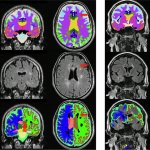
A new AI tool can extract key information from brain MRI scans of multiple sclerosis (MS) patients. This could be used to improve disease and treatment response monitoring.

The new national Precision Omics Initiative Sweden (PROMISE) aims to generate and integrate extensive molecular data to create a model for precision medicine implementation for Sweden.

Soccer is not only a fun and popular sport, but can also help prevent many lifestyle-related conditions, including diabetes, heart disease, obesity, several cancers, and mental health challenges.

A network of artificial neurons imitating the human brain could help identify patients at risk of a serious arrhythmia from an ECG and avoid many cases of sudden cardiac death, a new study suggests.

Severe obesity comes with serious health risks, which can be reduced with metabolic and bariatric surgery. Now, a landmark study reveals which operation is most effective or cost-effective.

With the Eluxeo® 8000 system, Fujifilm Healthcare Europe is bringing their latest in endoscopy to European markets. The system – the first in an all-new series – features new therapeutic capabilities, workflow management and improved image quality.

The evolving role of AI tools in digital pathology was explored at an open discussion during the annual Digital Pathology and AI Congress in London with a high-level panel of practitioners looking at current and future technology options. The panel of pathologists, scientists and academics from Europe and the USA assessed the tools they currently use and are available to them, and those they…

By using AI to analyse ECG data, researchers created an algorithm to predict the biological age of the heart. This could be used to identify those most at risk of cardiovascular events and mortality.

To diagnose prostate cancer, an MRI-guided biopsy is often performed. Now, a study shows that micro-ultrasound is just as effective, cheaper and easier to use. This could help free up MRI capacities.
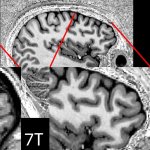
Using ‘parallel transmit’ technique, researchers have found a new way to detect lesions in the brain of patients with treatment-resistant epilepsy in an MRI scan, without imaging signal dropouts.
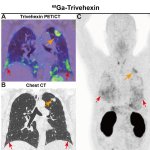
Nuclear medicine specialists have successfully used the radiopharmaceutical Ga-68-Trivehexin from Trimt to accurately diagnose patients with pulmonary fibrosis and concurrent lung cancer.
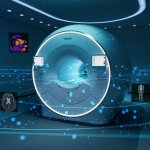
A greater emphasis on AI and sustainability, new approaches to mitigating staff shortage and more: At the European Congress of Radiology (ECR) 2025 in Vienna, Philips showcased its approaches to several critical issues in diagnostic imaging. The global healthtech company presented solutions addressing today's healthcare challenges while aligning with the congress's "Planet…

Could a t-shirt with sensors reduce the time patients need to stay in hospital after a urological surgery? A recent pilot study suggests it might.

New findings show how AI-assisted mammography may not only reveal breast cancer, but can also assess calcium buildup in the arteries within breast tissue—an indicator of cardiovascular health.

Pinar Bor is a clinical professor of gynecology at the Department of Clinical Medicine at Aarhus University, where she conducts research aimed at improving the quality of life for women suffering from prolapse and urinary incontinence - conditions that often arise after childbirth and can have long-term consequences.
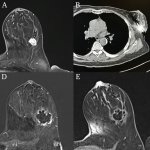
Cryoablation, the destruction of malignant cancer cells by freezing them, is increasingly becoming an alternative to having conventional lumpectomy for patients diagnosed with early-stage, localised, low-risk breast cancer. Findings from numerous recent clinical trials show that cancer recurrence rates are very low and are comparable to breast conservation surgery (BCS).
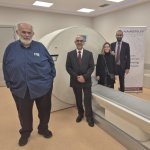
Agios Andreas General Hospital of Patras, Greece, is set to enhance its diagnostic capabilities with the installation of a new digital PET/CT imaging system.

Giving separated blood plasma improves outcomes in patients with traumatic brain injury (TBI) or shock, whereas unseparated or “whole” blood may be best for patients with traumatic bleeding.

A new study highlights the potential of a gamified mobile health app designed to help people with Multiple Sclerosis manage fatigue, one of the most common and debilitating symptoms of the disease.
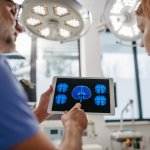
A novel sensor placed on a patient’s head registers nanometric expansions of the skull in each cardiac cycle in real time to measure intracranial pressure more accurately and non-invasively.

A new analysis of commercial IV fluid bags reveals that they often contain microplastics that, upon infusion, would enter the recipient’s bloodstream and potentially cause negative health effects.

New research reveals that self-generated electrical activity of small cell lung cancer (SCLC) directly promotes tumor metastasis and progression. This may provide new avenues for future treatments.

Machine learning models fail to detect key health deteriorations in the ICU: a new study reveals that 66% of critical injuries in hospitals would go unnoticed if the current AI models were put to use.

A new study examining the effects of sleep patterns and shift work on the immune system has found that sleep debt and night shifts increase the risk of several common infections in nurses.

When a Neonatal Intensive Care Unit (NICU) runs out of capacity, babies often have to be moved, creating health risks. Researchers investigate how flexible deployment of nurses can prevent this.

Generative AI can detect and quantify cognitive biases of human caregivers during medical emergency situations. This way, LLMs could help reduce the impact of bias based on gender, age, or ethnicity.

There is no known cure for Alzheimer’s disease (AD), although prescription drug-based treatments that can slow AD progression in some patients are starting to enter clinical use. Biomarkers, quantifiable characteristics of biological processes or pathological conditions of the body, are making it possible to help identify and measure the presence and extent of AD and its degenerative…
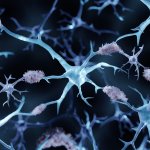
Blood-based biomarker (BBB) tests may represent the best weapon to combat the soaring rates of Alzheimer’s disease (AD) throughout the world. Existing clinically validated tests are currently deployed to facilitate diagnosis, to monitor disease and effectiveness of treatments, to quantify progression, and to determine if a patient is appropriate for treatment or participation in a clinical…
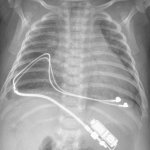
A pacemaker designed for babies could fill an unmet need for newborns with congenital heart defects and other heart conditions, finds a new study.

Playing video games to recover hand and wrist mobility? A new system of exergames demonstrates the potential for rehabilitation while providing therapists with data to analyse patients’ progress.
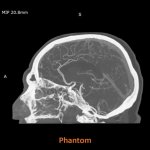
Anatomically accurate 3D-printed phantoms for CT imaging and AI training show promise as an alternative to cadavers. The new technology allows for patient-specific phantoms with realistic radiopacity.

The countdown has begun for Medical Japan 2025 Osaka, Western Japan’s leading medical and healthcare trade show, taking place from March 5-7, 2025, at INTEX Osaka, where industry professionals, thought leaders, and innovators will gather to showcase cutting-edge technologies, foster collaboration, and drive advancements in medical, elderly care, pharmacy, and healthcare.
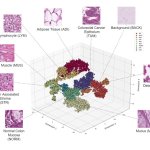
Researchers developed an advanced AI tool for automatic analysis of colorectal cancer tissue slides. The new model outperformed all predecessors in the classification of tissue microscopy samples.
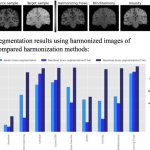
MRI is an essential tool for clinicians, but the variability of image acquisition protocols is a challenge for achieving consistent and reliable interpretation. A new study intends to fix this issue.

United Imaging, a global leader in manufacturing advanced medical imaging and radiotherapy equipment, showcases a range of cutting-edge technologies aligned with sustainable values. Notably, the company achieves an A rating in the MSCI ESG ratings, highlighting its unwavering commitment to transforming medical diagnostics and patient care worldwide through a holistic, sustainable approach.

Medical Taiwan 2025, organized by TAITRA, will take place from June 5 to 7 at the Taipei Nangang Exhibition Center (TaiNEX 2). As a leading event in Asia’s medical and healthcare sectors, the exhibition’s theme, “Innovating Wellness,” will highlight groundbreaking solutions in medical technology and healthcare.

New research uncovers the hidden diversity of adrenal gland tumors, shedding light on how they cause unusual medical symptoms and paving the way for new drug treatments.
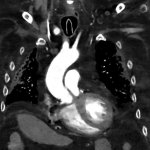
A new blood test, using neurofilament light chainproteins as biomarker, could lead to better diagnosis and management of amyotrophic lateral sclerosis (ALS).

The boom in interventional radiology procedures has enabled great strides in ischemic stroke management. But while a myriad of techniques are available, the challenge remains in choosing the most appropriate thrombectomy treatment on the spot, according to Jordi Blasco Andaluz, a neuroradiologist at Hospital Clinic Barcelona. The new ROSSETTI registry is designed to change this.

Pancreatic cystic lesions – indicating an increased risk of pancreatic cancer – are an occasional incidental finding in routine computed tomography (CT) abdominal imaging. New research suggests that the superior image quality of photon-counting CT (PCCT) can help detect more of these lesions. At the RSNA annual meeting, an expert outlined the benefits and limitations of the imaging technique…
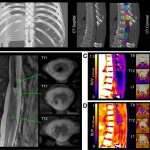
By detecting nerve connections in the injured spinal cord, a newly developed radiotracer could help diagnose injuries more precisely, monitor recovery, and evaluate therapy effectiveness.

Research on biliary tract cancer is advancing rapidly, ranging from targeted treatments to new drugs. However, the delivery of these advances to patients is lagging behind, new European studies find.
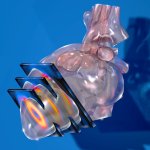
Nuclear cardiology is a specialised field in nuclear medicine that evaluates the heart function to help diagnosing conditions such as coronary artery disease and to assess treatment efficacy, whilst minimising invasive procedures like biopsies. More recently, clinicians have increasingly opted for nuclear imaging over endomyocardial biopsy to diagnose cardiac amyloidosis, allowing for earlier…

A newly-developed robot can detect medication side-effects in patients after heart arrhythmia treatment faster than a human doctor, while reducing the number of follow-up tests.

Crohn’s disease is incurable, with high rates of recurrence. A new approach, involving surgical removal of the mesentery, dramatically reduces the possibility that follow-up surgery will be needed.

Medical imaging has come a long way in the past four decades: Advances have been made in the digitization of images, but also towards more gender equality in a once male-dominated field. We talked with Katherine P. Andriole, Ph.D., a leading expert and one of the first women to enter the field, about the evolution of medical imaging informatics, experiences she has had, and her advice to those…